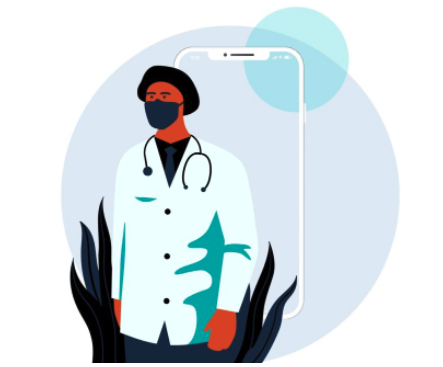Why low-code is the future of healthcare?
It is estimated that by 2027, the global market for low-code will be USD 65 Billion with the expectation of reaching $187 Billion by 2030 (CAGR of 31.1% for 2020 – 2030).
Forrester estimated that by the end of 2021, 75% of all enterprise software would be made with low-code. (1)

The rapid growth of the low code market can be attributed to the boost provided by virtual transformations during Covid-19 pandemic. When most industries were forced to seek digital alternative to enable smooth running of the processes, healthcare industry was no exception.
Though progress was made in leaps and bounds to enable virtual healthcare access, many care providers faced similar challenges of upgrading existing systems to incorporate the unique needs of healthcare access during the pandemic. Low-code no-code solutions have emerged as viable solutions to these unique challenges.(2)
Low-code no-code platforms allow faster development by reducing the effort it takes for senior developers to create a tech product. Approximately 50% of enterprises using low-code solutions say they provide a faster speed of delivery than other types of programming (3)
Visual approach to programming that utilizes drag-and-drop functionality enables citizen developers like healthcare providers to create programs that are suited to the unique needs of their practices. The decreased reliance on software developers also allows for reduced costs which makes low-code no-code platforms an incredibly cost effective solution to ongoing problems in virtual healthcare. (2) In 2019, a report by IT research firm Gartner predicted by 2024 more than 65 percent of application development activity will be low-code. (4)
Using such platforms also increases the potential for innovation by offering increased agility, scalable architecture, and easy integration with third party software. Healthcare companies have used these platforms for system analysis, data integration, data security compliant environments and process automation. (3)
In recent years, many healthcare systems have been using low-code no-code solutions to drive their growth with positive results. Examples include:
• Advanced Technology Company (ATC), a Kuwait-based healthcare technology provider was able to deploy a fully customizable hospital management system, using low-code solution within weeks instead of years.
• Luz Saúde, a leading Portuguese healthcare group, estimated a time frame of nine months of development with a full-scale engineering team to create a content management, access control and scheduling software. With low code they were able to develop the software in four months using a team of 7 people only.
• Saga HealthCare, one of the UK’s largest homecare agencies, needed to launch a new homecare scheduling system with an estimate of $16 million spent on the project in three years. However, a low-code solution allowed the company to build the desired system for less than USD 333,500 over just six months. (3)
In the current market where growth is accelerated with rapid innovation, low-code no-code tools are the solutions to drive digital transformation. As the only cost effective and agile solution in the market, low-code no-code apps are leading the way for enhanced virtual care and increased healthcare access without compromising on personalized care provision.
Bibliography
1. (50+) Hyper Relevant Low-Code Statistics And Facts for 2022 [Internet]. [cited 2022 May 26]. Available from: https://quandarycg.com/low-code-statistics/
2. How and Why Low-Code/No-Code Tools are Helping Drive the Transformation of Healthcare [Internet]. [cited 2022 May 26]. Available from: https://accelerationeconomy.com/cybersecurity/how-and-why-low-code-no-code-tools-are-helping-drive-the-transformation-of-healthcare/
3. Low-Code in Healthcare: Cost-Effective and Innovative Development – Acropolium [Internet]. [cited 2022 May 26]. Available from: https://acropolium.com/blog/low-code-healthcare/
4. How low-code development can power healthcare innovation | Healthcare IT News [Internet]. [cited 2022 May 26]. Available from: https://www.healthcareitnews.com/news/how-low-code-development-can-power-healthcare-innovation
Insights
-

No-Code Tools for Managing Mental Health and Burnout in Healthcare Settings
Read more“P4” is a term that is often associated with future of medicine – prediction, prevention, personalization and patient participation. Many current health related technologies have already started moving towards the future and many more innovations are yet to come, that will make the goal of holistic medicine true.
-

Impact of health technology on diabetes management
Read more“P4” is a term that is often associated with future of medicine – prediction, prevention, personalization and patient participation. Many current health related technologies have already started moving towards the future and many more innovations are yet to come, that will make the goal of holistic medicine true.
